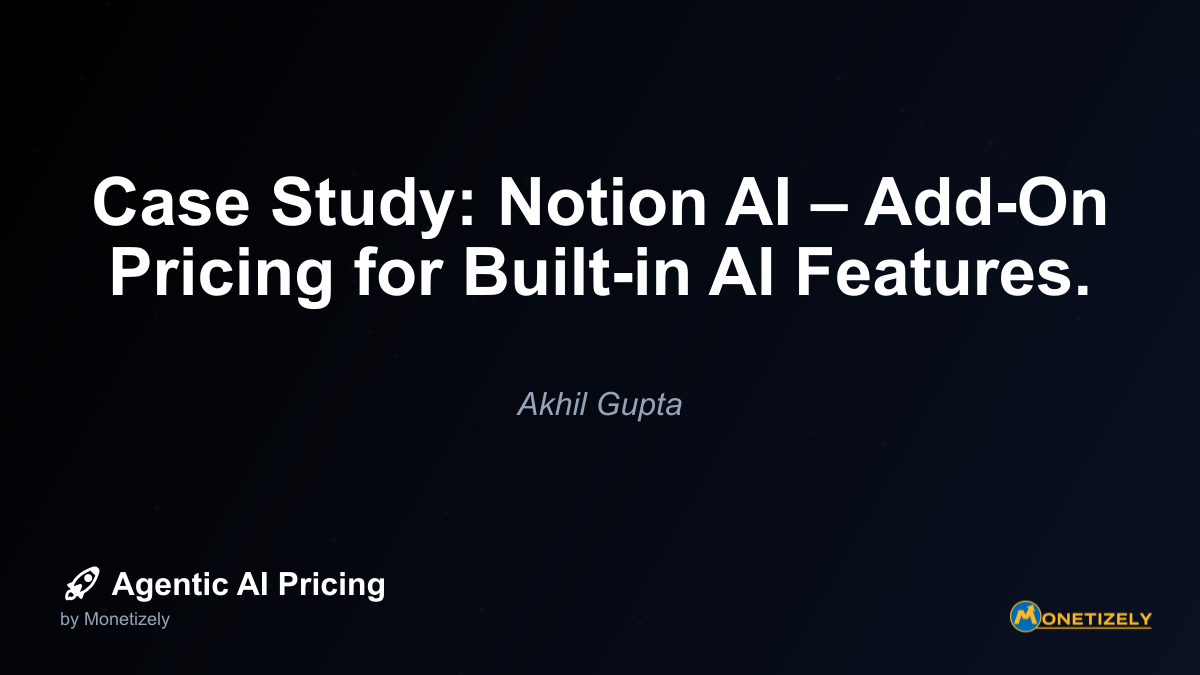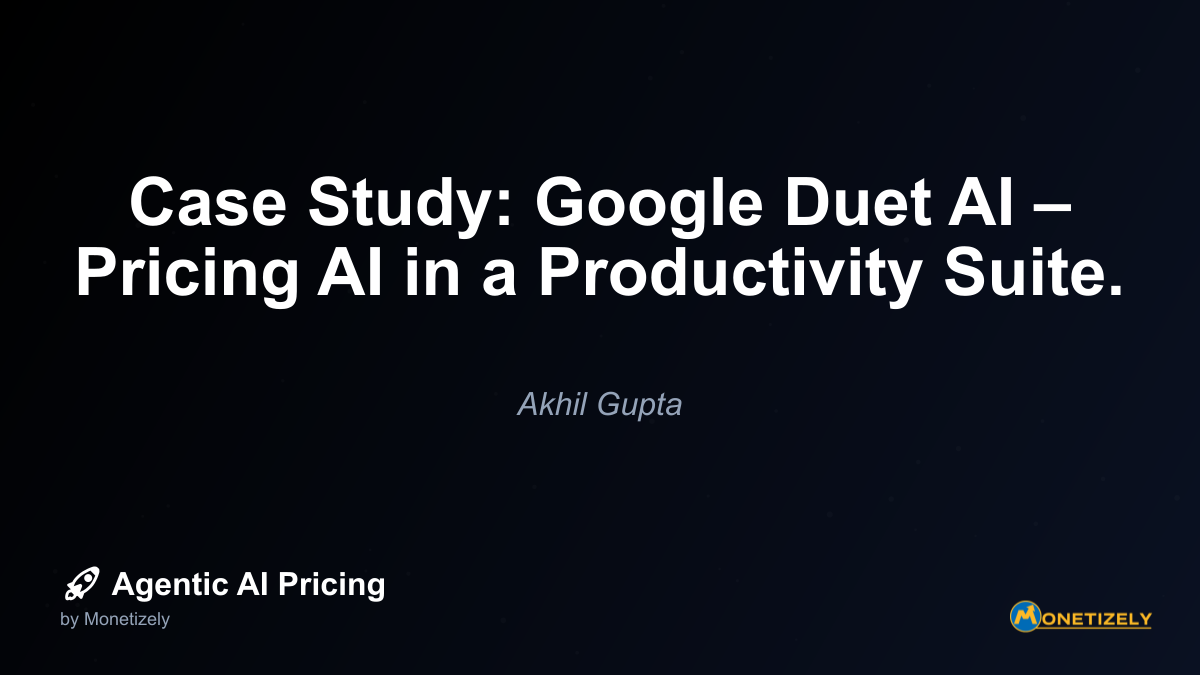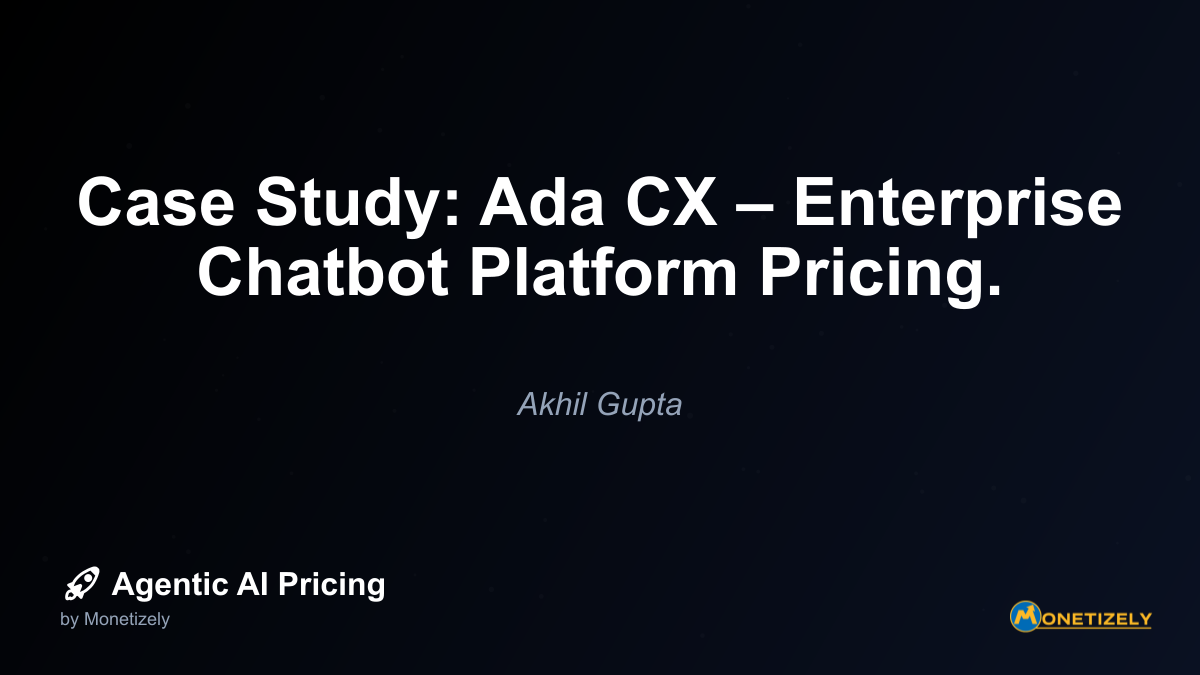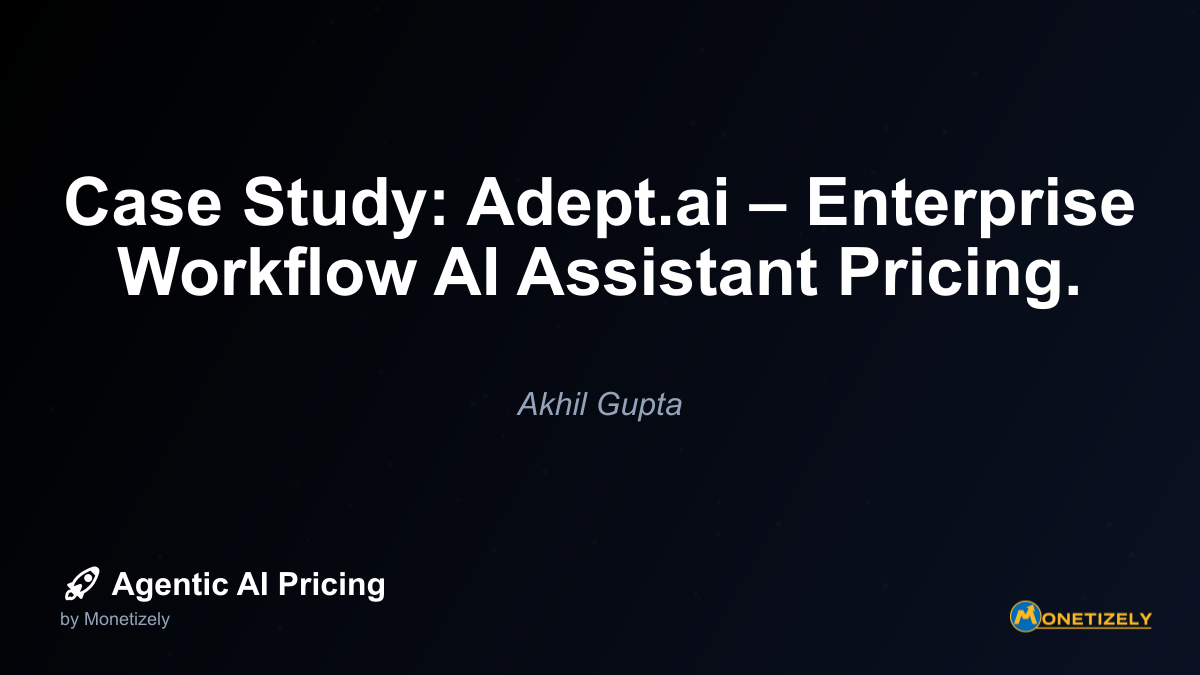· Akhil Gupta · Case Studies · 7 min read
Case Study: Notion AI – Add-On Pricing for Built-in AI Features.
AI and SaaS Pricing Masterclass
Learn the art of strategic pricing directly from industry experts. Our comprehensive course provides frameworks and methodologies for optimizing your pricing strategy in the evolving AI landscape. Earn a professional certification that can be imported directly to your LinkedIn profile.

Notion’s implementation of add-on pricing demonstrates a sophisticated understanding of user segmentation. Their approach effectively categorizes users based on both their willingness to pay for AI features and the value they derive from those features.
Primary Segments in Notion’s AI Pricing Strategy
Casual Users - These users primarily leverage Notion for basic organization and simple document creation. They may experiment with AI features during the free trial but don’t find enough ongoing value to justify the additional cost.
Content Creators - Writers, marketers, and others who regularly produce written content within Notion derive significant time savings from AI drafting and editing capabilities, making the add-on fee easily justifiable.
Knowledge Workers - Professionals who manage large information repositories benefit from AI’s ability to summarize, organize, and extract insights from existing content.
Teams and Enterprises - Organizational users who can distribute the cost of AI features across multiple team members while capturing productivity gains at scale.
By implementing an add-on model, Notion effectively allows each segment to self-select based on their perceived value from AI capabilities. This approach avoids the common pitfall of forcing all users into a one-size-fits-all pricing structure that might be perceived as too expensive by casual users or underpriced for power users.
The Add-On Model’s Advantages for AI Features
The decision to bundle or separate AI capabilities represents one of the most critical strategic choices for SaaS companies. Notion’s approach illustrates several advantages specific to the add-on model:
1. Clearer Value Attribution
When AI features have their own price tag, users can more easily evaluate their specific return on investment. This transparency helps justify the additional cost through tangible productivity gains or time savings.
2. Simplified Upgrade Decisions
The binary nature of the add-on (you either have AI features or you don’t) simplifies the decision-making process for users. This contrasts with more complex tiered models where AI capabilities might be partially available across different pricing levels.
3. Reduced Risk of Overpricing
By keeping AI capabilities separate, Notion avoids the risk of pricing their core product out of the market. If they had bundled AI into all tiers and raised prices accordingly, they might have alienated users who don’t need or want these features.
4. Flexibility for Future Development
The separated model gives Notion greater flexibility to evolve their AI capabilities over time. They can add new AI features, adjust pricing, or even create multiple AI-focused add-ons without disrupting their core product pricing structure.
5. Controlled Scaling of AI Costs
AI features often have variable infrastructure costs based on usage patterns and computational requirements. The add-on model allows Notion to more directly manage these costs and adjust pricing if necessary without affecting their entire customer base.
Pricing Psychology Behind Notion’s Approach
The approximately $10/month price point for Notion AI reflects careful consideration of pricing psychology:
The “Coffee Per Day” Principle - At roughly $10/month, the add-on costs less than many people spend on a few coffees, making it feel accessible while still generating meaningful revenue at scale.
Perceived Value Anchoring - By positioning AI as a productivity multiplier, Notion establishes value perception that exceeds the actual dollar cost. If the AI assistant saves even 30 minutes per month of a knowledge worker’s time, the ROI is clearly positive.
Psychological Pricing Threshold - Staying under the $10 psychological barrier (at $8 or $10 depending on billing cycle) keeps the decision in the “easy approval” range for many users and organizations.
Complementary Value Proposition - The add-on is presented not as a separate product but as an enhancement that makes the core Notion experience more valuable, justifying the incremental cost.
Implementation Challenges and How Notion Addressed Them
Despite the strategic advantages, Notion faced several implementation challenges with their add-on pricing approach:
1. Feature Boundaries
Determining which capabilities should be part of the core product versus the AI add-on required careful consideration. Notion had to avoid moving existing functionality behind the paywall while ensuring the AI features delivered sufficient standalone value.
2. User Education
Many users initially didn’t understand the full potential of AI features, making it challenging to communicate the value proposition. Notion addressed this through contextual prompts, example use cases, and educational content demonstrating specific workflows enhanced by AI.
3. Avoiding Feature Fragmentation
With separate development tracks for core and AI features, Notion needed to maintain a cohesive user experience. They achieved this through consistent design language and ensuring AI features integrated seamlessly into existing workflows rather than feeling bolted-on.
4. Managing Cost Variability
AI features have variable infrastructure costs based on usage patterns. Notion needed to carefully model these costs against their fixed subscription fee to ensure profitability while delivering consistent value.
Market Response to Notion AI Pricing
The market response to Notion’s AI pricing has been generally positive, with several noteworthy patterns:
Individual Adoption - Individual power users were quick to adopt the AI features, finding clear value in the productivity enhancements.
Team Hesitancy - Some teams initially hesitated at the per-seat multiplier effect of the add-on pricing, particularly for large organizations where not all users would leverage AI capabilities equally.
Competitive Positioning - The add-on approach has helped Notion maintain competitive pricing for their core product while still capturing value from their AI investment.
Expectation Setting - By establishing AI as a premium feature worth paying for, Notion has helped set market expectations that advanced AI capabilities represent additional value beyond standard productivity tools.
Lessons for Other SaaS Platforms Considering AI Add-Ons
Notion’s experience offers valuable insights for other platforms considering similar AI monetization strategies:
1. Demonstrate Value Before Pricing
Notion’s free trial period was crucial for establishing user habits and demonstrating tangible value. This “try before you buy” approach reduced friction and created natural upgrade paths.
2. Focus on Workflow Integration
The most successful AI features are those that enhance existing workflows rather than creating entirely new ones. Notion’s AI capabilities work within the contexts users already understand.
3. Provide Clear Use Cases
Abstract promises about AI capabilities don’t drive conversions. Notion succeeded by showcasing specific, relatable use cases like “summarize this meeting note” or “draft an email based on these bullet points.”
4. Maintain Consistent Experience
Notion ensured that the core product experience remained consistent whether or not users had the AI add-on, avoiding the feeling of an incomplete product for non-AI users.
5. Price Based on Perceived Value, Not Cost
While AI features have real infrastructure costs, Notion priced based on the value delivered to users rather than merely covering their expenses with a markup.
The Future Evolution of Notion’s AI Pricing Strategy
As AI technology and market expectations continue to evolve, Notion’s pricing strategy will likely adapt in several ways:
1. Tiered AI Capabilities
Rather than a single AI add-on, Notion may eventually introduce multiple tiers with different capabilities and price points, allowing for more granular value capture.
2. Team-Specific Pricing
Future iterations might include team-specific AI pricing that acknowledges not all members need the same level of AI functionality, potentially with pooled usage allowances.
3. Vertical-Specific AI Features
As Notion continues to expand into different verticals (such as project management, wikis, and databases), they may develop and price specialized AI capabilities for specific use cases.
4. Integration with Third-Party AI
The current closed AI ecosystem might expand to allow integration with third-party models or specialized AI tools, potentially with different pricing structures.
Conclusion: Why Notion’s Add-On Strategy Succeeds
Notion’s approach to AI pricing represents a thoughtful balance between accessibility and value capture. By separating their AI capabilities as an optional add-on, they’ve maintained the core product’s market position while creating a new revenue stream that directly correlates with delivered value.
The approximately $10/month price point strikes an effective balance - high enough to generate meaningful revenue but low enough that individual users can justify the expense based on productivity gains. This approach has allowed Notion to invest in continued AI development without disrupting their established market position.
For SaaS platforms considering AI monetization strategies, Notion’s case demonstrates the importance of:
- Demonstrating value before implementing pricing
- Maintaining accessibility of core functionality
- Clearly communicating specific use cases and benefits
- Setting prices based on delivered value rather than just covering costs
- Providing a seamless experience regardless of whether users opt for AI features
As AI capabilities continue to evolve and user expectations shift, Notion’s pricing strategy will likely adapt as well. However, their foundational approach of treating AI as a value-adding enhancement rather than a complete product replacement provides a sustainable model that other SaaS platforms would be wise to consider.
The success of Notion AI’s pricing strategy ultimately stems from its alignment with fundamental value delivery - enhancing productivity through intelligent assistance rather than merely showcasing technological capabilities. This focus on practical utility over novelty creates a sustainable business model that can evolve alongside advances in AI technology.
Co-Founder & COO
Akhil is an Engineering leader with over 16+ years of experience in building, managing and scaling web-scale, high throughput enterprise applications and teams. He has worked with and led technology teams at FabAlley, BuildSupply and Healthians. He is a graduate from Delhi College of Engineering and UC Berkeley certified CTO.
Pricing Strategy Audit
Let our experts analyze your current pricing strategy and identify opportunities for improvement. Our data-driven assessment will help you unlock untapped revenue potential and optimize your AI pricing approach.




